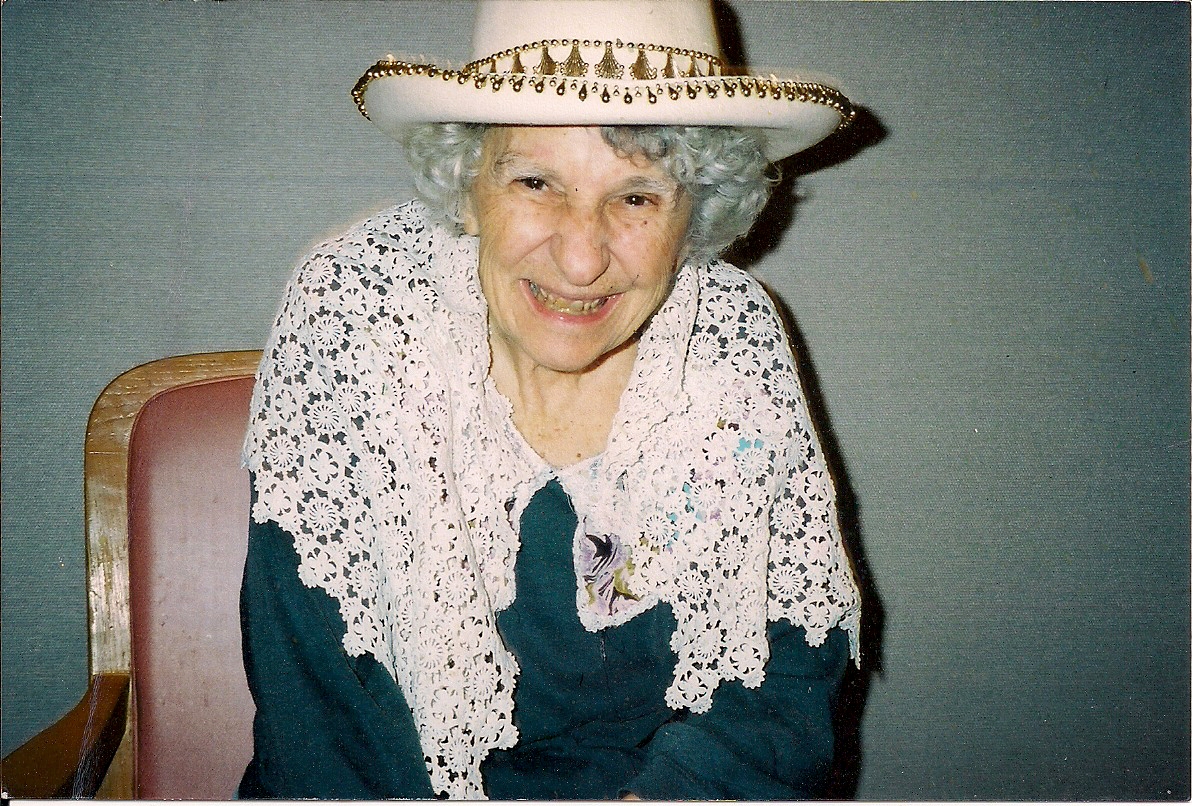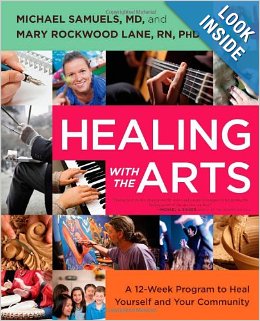Posts Tagged ‘Alzheimer’s Research’
An Alzheimer’s Holiday Blessing
As my mother’s Alzheimer’s progressed, her spiritual openness increased.
This is an excerpt from my book Love in the Land of Dementia that describes Mom’s new way of celebrating the holidays.
**
We roll back into the facility’s dining room just as the show is ready to start. The singer, Thelda, kicks off her shoes and presses play on the boom box. Above the cheerful sound track, she sings Jingle Bells. She dances across the room with the remnants of ballroom steps. She stops in front of Mom and sings right to her. She gets on her knees, so she can look into Mom’s eyes, and keeps singing. Mom notices her and smiles a little.
Thelda moves on, singing to each of the patients gathered around, so intent on making a connection that she often forgets the words.
“Is it all right for your Mom to come to Christmas holiday events?” the activity director had asked me, when Mom moved into the skilled care portion of the nursing home.
“Yes, I’d like her to go to any activities. She likes the extra energy.”
I think Mom would approve of my decision, even though she has never celebrated Christmas. Growing up, her immigrant mother held on to the Jewish spirit of her home, kneading dough for Friday evening challah, observing each holiday and prayer period in her own way. Some orthodox women followed the religious law that commanded a small piece of the dough be burned as an offering to God. My grandmother was poor; she did not believe in burning good food, regardless of tradition. So she sacrificed a portion of the dough to her youngest daughter, my mother Fran. She created a “bread tail,” leftover dough that she baked, then smeared with butter and sprinkled with sugar . When Mom used to talk about her mother, she always mentioned this special treat.
Even when I was growing up, and we were the only Jewish family in our neighborhood, my mother still did not sing Christmas song. She let the holiday rush by her, like a large train, whooshing past and leaving her behind.
Now, I am singing Christmas carols to my Mom for the first time and she is smiling. She has moved beyond the place where the religions are different, beyond the place where she wants to separate the dough and make a sacrifice for tradition. Her new tradition is anyone who can make her smile.
With each song, from White Christmas, to Silver Bells, to Frosty the Snowman, Thelda moves back to Mom, tapping her, acting sillier and sillier. Each time, Mom lifts her head and widens her mouth for a second.
For her finale, Thelda puts on a big red nose and sings Rudolph. When she dances in front of Mom with that scarlet nose, Mom laughs, her face a miracle in pure enjoyment. I laugh too, so delighted to see Mom engaged and absorbed.
Two weeks from now, I will bring a menorah and candles into my mother’s room. My father and I will have a short Chanukah ceremony with Mom. She will pick at the shiny paper covering the Chanukah gelt (chocolate candy disguised as money). She will slump over in her chair. But she will come back to life when she sees me, her only daughter, wearing a big red nose as I light the menorah.Here’s to a meaningful and fun holiday season.
I look forward to connecting with you when I resume blogging in early January.
Drawing out the Inner Artist: Seven Tips for Engaging People who have Dementia
“Every child is an artist. The problem is how to remain an artist once he grows up.” ― Pablo Picasso
Sharing the arts is one of our passions. We so appreciate the insightful work of Michael Samuels, M.D., co-founder and director, Arts as a Healing Force. These are his words, which originally appeared in the Huffington Post:
Anyone can use the healing power of art to reach a loved one living with Alzheimer’s disease. All it takes is an ordinary person who loves and cares for another. A recent article in the Boston Globe says, “Making music, painting or dancing — and seeing or hearing it — may be the most effective treatment for dementia to date.”
There has been new exciting research about art and Alzheimer’s that sheds light on this remarkable way of healing. Music and art stimulate areas of the brain not affected by Alzheimer’s and accesses memories through routes that avoid affected language centers. Art actually helps the brain navigate new neurological communication pathways. Even if the Alzheimer’s patient is unresponsive and can’t remember where they are, a song can stimulate the sweet memories of youth that lay long buried.
Any art that the Alzheimer’s patient enjoys will open a huge new way of healing — for yourself and for the one you love.
TIPS:
You can do it. Professional training is not necessary; anyone can be an artist/healer for a person living with Alzheimer’s.
Keep it simple. Music is the easiest and most researched way to reach a person with Alzheimer’s but you also can use painting, sculpting and poetry. Gear your art to the person’s skill level at the moment.
Go into the past to heal the present. Art evokes memories. Any art that brings up a memory is powerful. A song from a past event evokes the memory of a first kiss. A painting or photograph of the family home can help evoke childhood memories.
Make it stimulating. Choose bright colors, collage from old photograph albums, lively music, dances.
Make art in a sacred space. Make the place as wonderful and beautiful as you can. Play soft music in the background — make the lighting bright enough to see easily, add scents from aroma therapy and even make a small altar with loved objects from the past.
Support with loving kindness and compassion. Make all your comments nonjudgmental and loving. Art and healing is about process, not the product. It’s all about love and relationship.
Ask them to tell you the story about the artwork. If your loved one can still speak ask them to share the memories that come with the art, music or words.
According to the Alzheimer’s Association, music and art can enrich the lives of people with Alzheimer’s disease by allowing for self-expression and engagement even after dementia has progressed. Many organizations are using the power of art to help those living with Alzheimer’s. The Assisted Living Federation of America (ALFA) has an annual art contest at senior centers to encourage elderly people to stimulate their brains by making art. The I’m Still Here Foundation started Artists for Alzheimer’s initiative (ARTZ) that helps more than 10,000 Alzheimer’s and dementia patients attend arts events. This greatly enhances the lives of Alzheimer’s patients and reduces their symptoms.
Michael Samuels, M.D., Co-founder and director, Arts as a Healing Force
MICHAEL SAMUELS M.D. is a physician, artist, guided imagery specialist, and one of the foremost experts in body, mind, and spirit medicine today. He is the co-founder and director of Arts as a Healing Force. Samuels teaches at San Francisco State University’s Institute of Holistic Studies and is the author of 22 books, including the bestsellers The Well Body Book, Seeing with the Mind’s Eye, and the Well Baby Book. His latest book is HEALING WITH THE ARTS: A 12-Week Program to Heal Yourself and Your Community, co-authored by Mary Rockwood Lane, R.N., Ph.D.

